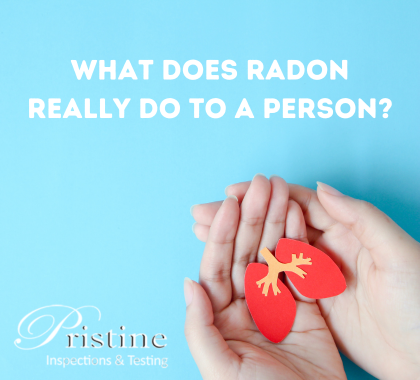Radon is a naturally occurring radioactive gas that can seep into buildings, including homes, workplaces, and schools. It is a significant environmental health concern as prolonged exposure to high levels of radon can have detrimental effects on human health.
-
Inhalation and Radioactive Decay:
Radon is an odorless and invisible gas that is released when uranium in rocks and soil start decaying. When radon gets into an enclosure, there is the tendency for high concentrations of it to get accumulated. Once inhaled, radon particles decay and release radioactive byproducts, such as polonium and lead, which can damage lung tissue and increase the risk of developing certain health conditions.
-
Lung Cancer Risk:
The primary health risk associated with radon exposure is an increased risk of developing lung cancer. Radon is the second leading cause of lung cancer after smoking and is responsible for a significant number of lung cancer cases each year. The radioactive particles emitted by radon can become trapped in the lungs, where they continuously irradiate nearby lung tissue, leading to cellular damage and an increased risk of developing lung cancer over time.
-
Non-Smoker Risks:
While smoking remains the leading cause of lung cancer, radon poses an independent risk for lung cancer even in non-smokers. In fact, non-smokers who are exposed to high levels of radon have a higher risk of developing lung cancer compared to non-smokers with minimal radon exposure. The combination of radon exposure and smoking further amplifies the risk of developing lung cancer, emphasizing the importance of addressing both factors for lung cancer prevention.
-
Other Health Effects:
In addition to lung cancer, some studies suggest a potential association between radon exposure and other health effects, although the evidence is less conclusive. These potential health effects include respiratory symptoms such as coughing, wheezing, and respiratory infections. However, more research is needed to establish a definitive link between radon exposure and these additional health outcomes.
-
Factors Affecting Radon Exposure:
Several factors influence the level of radon exposure in a given location, including geological characteristics, building construction, ventilation, and lifestyle factors. Homes and buildings located in areas with high levels of uranium in the soil or with poor ventilation systems are at higher risk of elevated radon levels. Smoking within a home with high radon concentrations can further increase the health risks associated with radon exposure.
-
Radon Testing and Mitigation:
To assess the radon levels in a home or building, radon testing is necessary. Short-term or long-term testing kits can be used to measure radon levels and determine if mitigation measures are required. Radon mitigation techniques, such as sealing cracks and openings, installing ventilation systems, or utilizing soil depressurization techniques, can effectively reduce radon levels and minimize the health risks associated with radon exposure.
Radon exposure poses a significant health risk, primarily through an increased risk of developing lung cancer. It is essential to be aware of the potential dangers of radon and take proactive measures to mitigate exposure in homes and buildings. Testing for radon and implementing mitigation strategies when necessary can significantly reduce the health risks associated with radon exposure. By addressing radon as an environmental hazard, we can protect ourselves and our communities from its harmful effects and promote healthier indoor environments.
MORE INFORMATION:
- Is a Pre-Offer Inspection a Good Idea
- Mistakes to Avoid During Your Home Inspection
- How to Read and Decipher the Home Inspection Report
- 3 Factors Behind the Cost of Home Inspections
- Home Inspection Repair Requests Buyers Shouldn’t Make
- 9 Ways to Get the Most Out of Your Home Inspection
- 5 Home Inspection Mistakes People Make
- Additional: Are Home Inspections Necessary?

